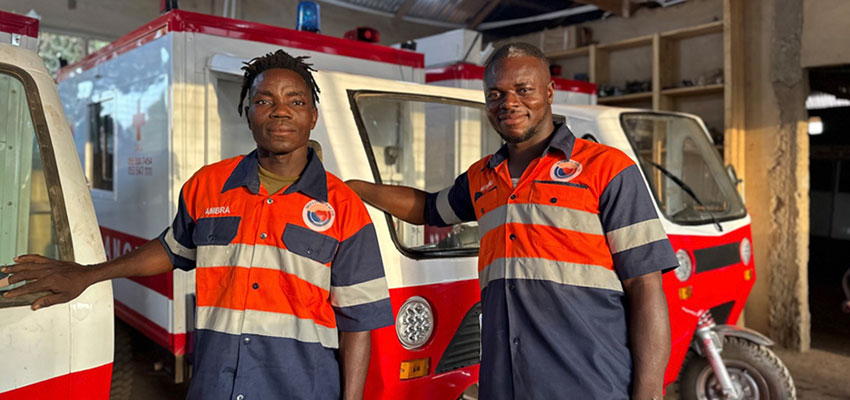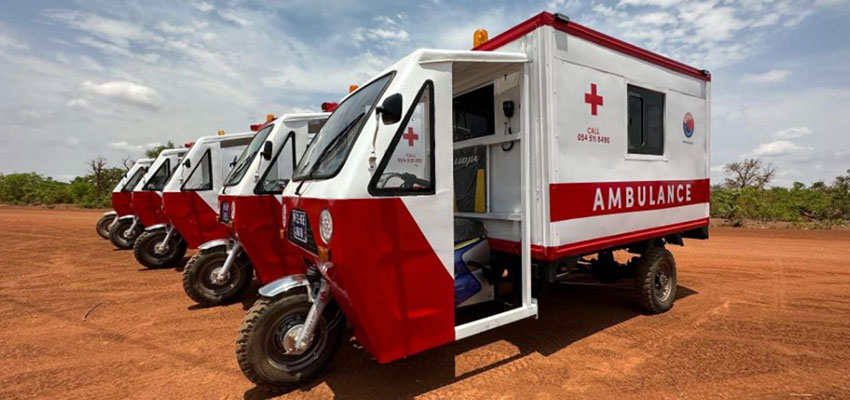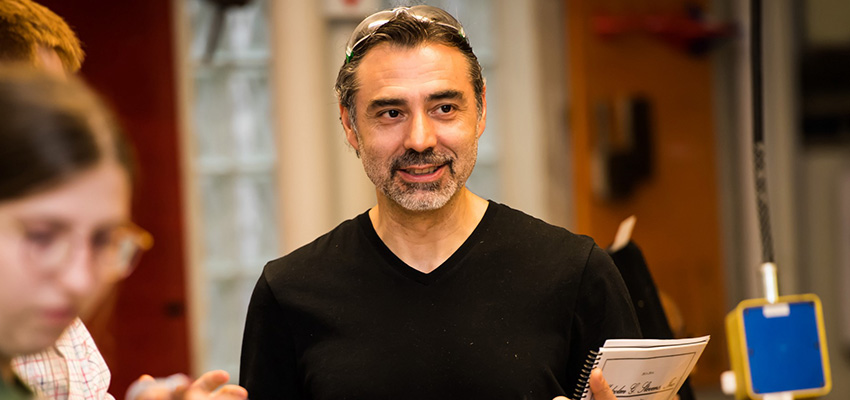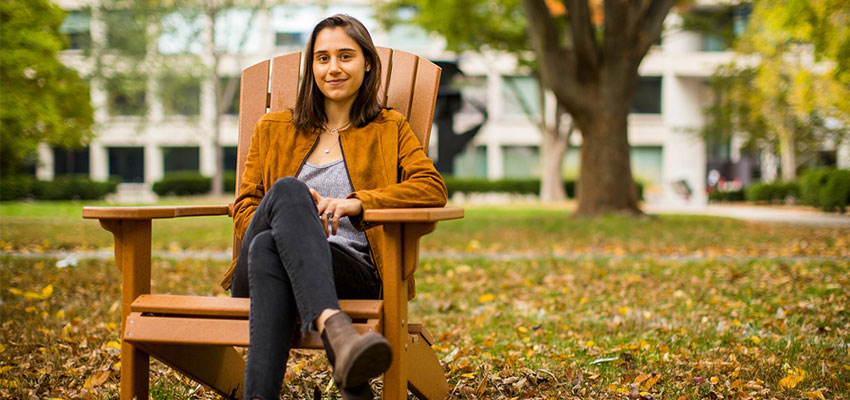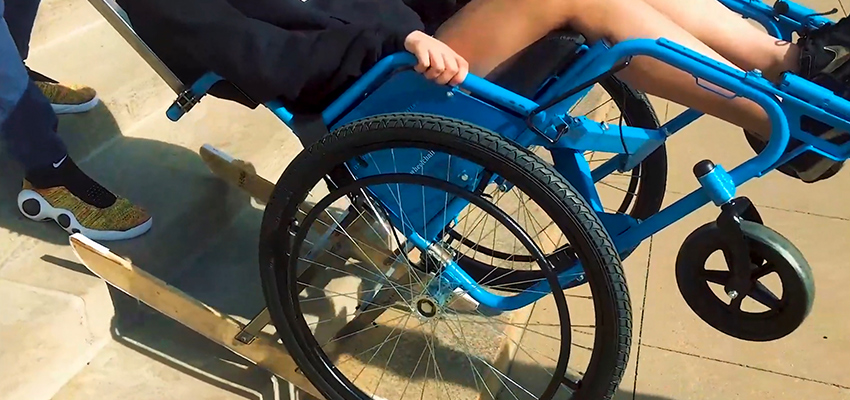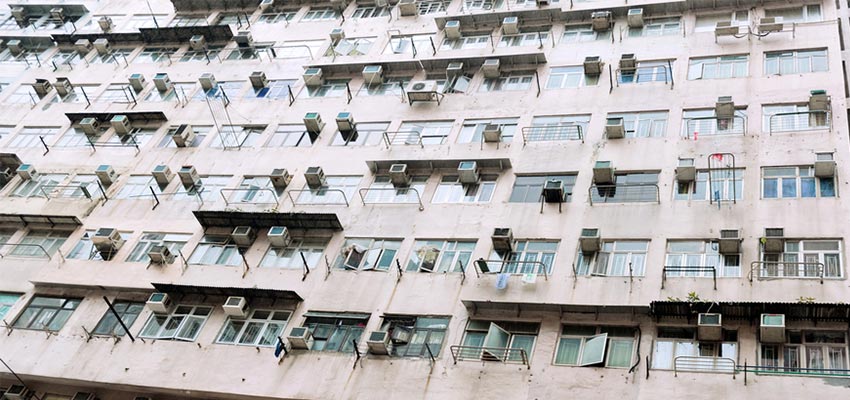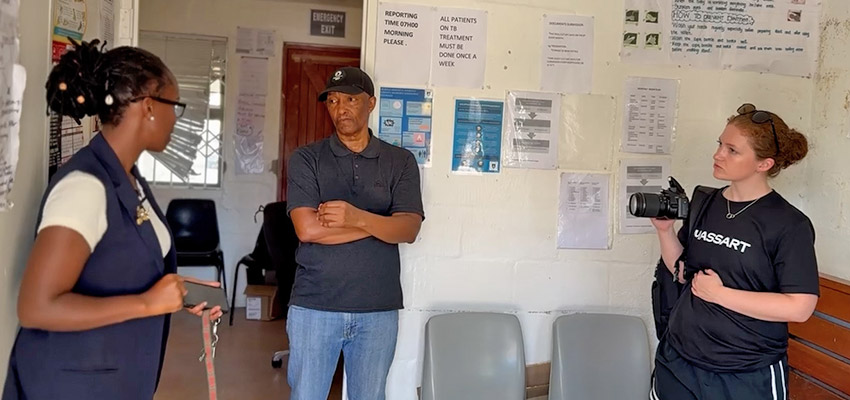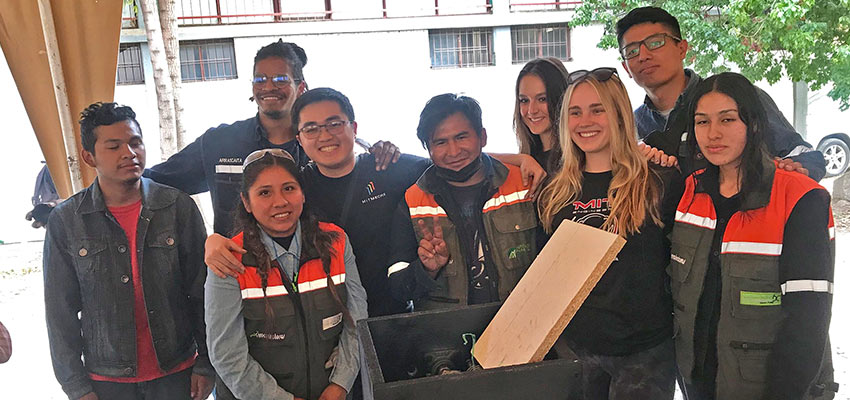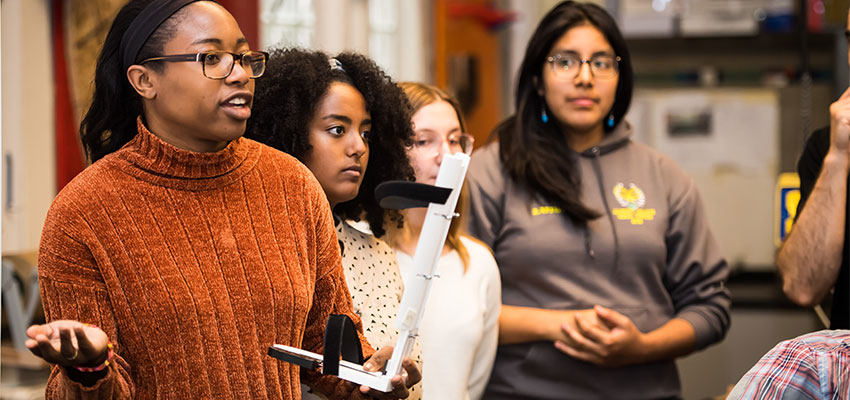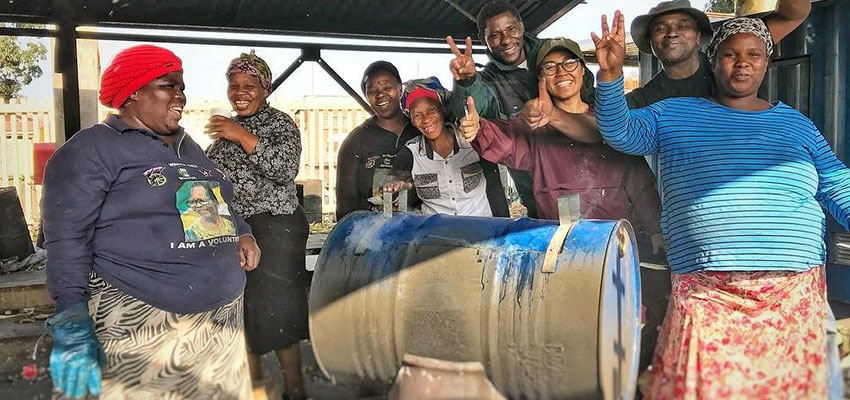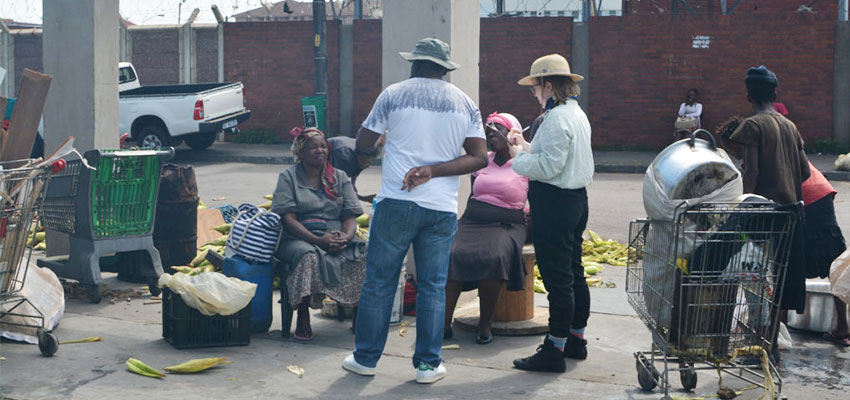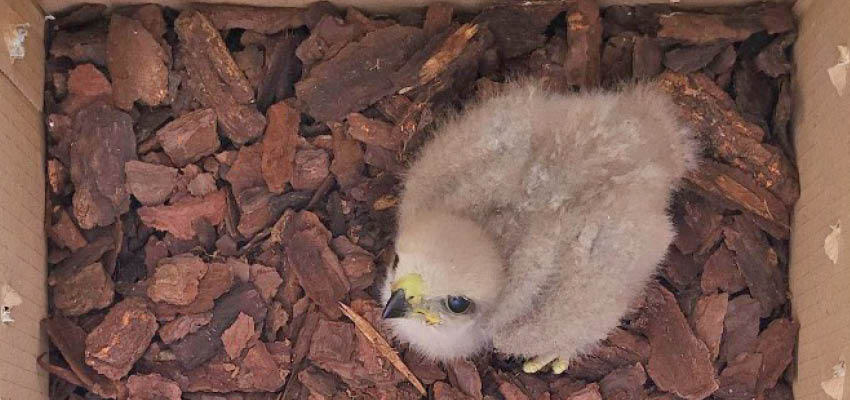
Developing a reusable, foldable carrier for transporting Ridgway’s Hawk nestlings in support of the Peregrine Fund’s conservation and repopulation efforts.
MIT D-Lab class
Student team
MIT students unless otherwise noted.
- Daniel Brown ‘25, Electrical Engineering and Computer Science. Daniel is interested in the design and optimization of power systems.
- Aniesha Dyce ‘25, Mechanical and Electrical Engineering. Aniesha is interested in solving complex problems, electromechanical systems, and product design.
- Deborah Jang ‘24, Wellesley College, Computer Science. Deborah is interested in design thinking and its international applications.
- Mia Ladolcetta ‘25, Mechanical Engineering. Mia is interested in electromechanical systems, product design, and design for manufacturing.
Community partner
The Peregrine Fund (https://peregrinefund.org/)
- Marta Curti, Hispaniola Program Director
- Gabriela Diaz, Project Coordinator, Punta Cana, Ridgway’s Hawk Field Technician
- Carlos Suárez, Ridgway’s Hawk Field Technician
Location
Dominican Republic
Problem
The Peregrine Fund is currently working with field technicians in and around Los Haitises National Park in the Dominican Republic to increase the population of the Ridgway’s Hawk, a critically endangered bird of prey species. To do this, technicians need to be able to relocate Ridgway’s Hawk nestlings to various locations so that future natural disasters will have minimal impact on the overall population. The cardboard boxes currently used for transportation need to be regularly replaced due to wear from the elements and are not optimized for carrying. The goal of this project is to design and develop a reusable bird carrier in order to safely transport Ridgway’s hawk nestlings between conservation sites.
Cultural context
Ridgway’s hawks are indigenous to the Dominican Republic, but there are less than 500 remaining. Due to the local belief that Ridgway’s hawks kill chickens, they have been hunted almost to extinction, with the last remaining population in Los Haitises National Park. Since 2008, the Peregrine Fund has been working to transport nestlings to new sites to make the species more resilient to natural disasters. These efforts paid off in 2013, with the first confirmed nesting pair in a new location. For more information on these raptors, please visit https://peregrinefund.org/explore-raptors-species/hawks/ridgways-hawk.
Proposed solution
We are designing a carrier box made out of corrugated plastic that is easy to assemble and disassemble. Ease of assembly and disassembly allows any field technician to assemble the box in a timely manner with little frustration. Using corrugated plastic makes the box waterproof, easy to be cleaned, safe for the birds, and lightweight. Having a waterproof box allows it to last longer since it is reusable after getting wet. To minimize biohazards, the box needs to be cleaned after the transport of each bird. Corrugated plastic has been used with animals and is proven to be safe. Having a lightweight yet durable box limits stress on the field technicians’ bodies.
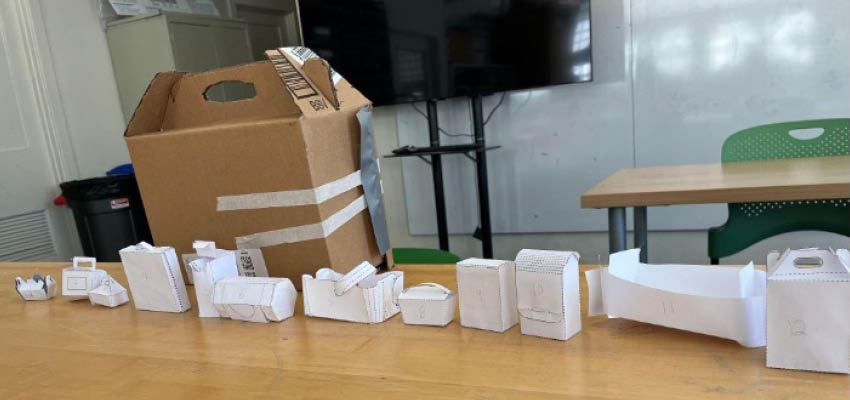
The box will open from the top and have air holes along the sides of the upper part of the walls. Having the box open from the top makes it safer for field technicians to handle the birds. If the box were to open from the sides, it is easier for the birds to attack the user with their talons. Since these are birds of prey, they would choose to attack with their talons before their beaks. Having air holes aligned along the top prevents the birds from accidentally getting caught and snagged in the orifices.
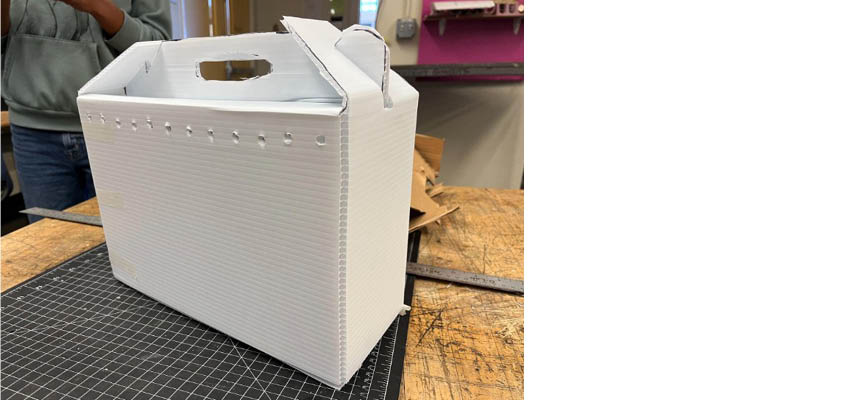
Next steps
The immediate next steps are for our partners to produce ~25 of our boxes for the nestlings. This process includes locating large enough corrugated plastic, getting access to box cutters or a laser cutter, cutting out our nets, and finally folding them before the transportation season.
Contact
Ankita Singh or Eliza Squibb, Co-Instructors Leadership in Design


